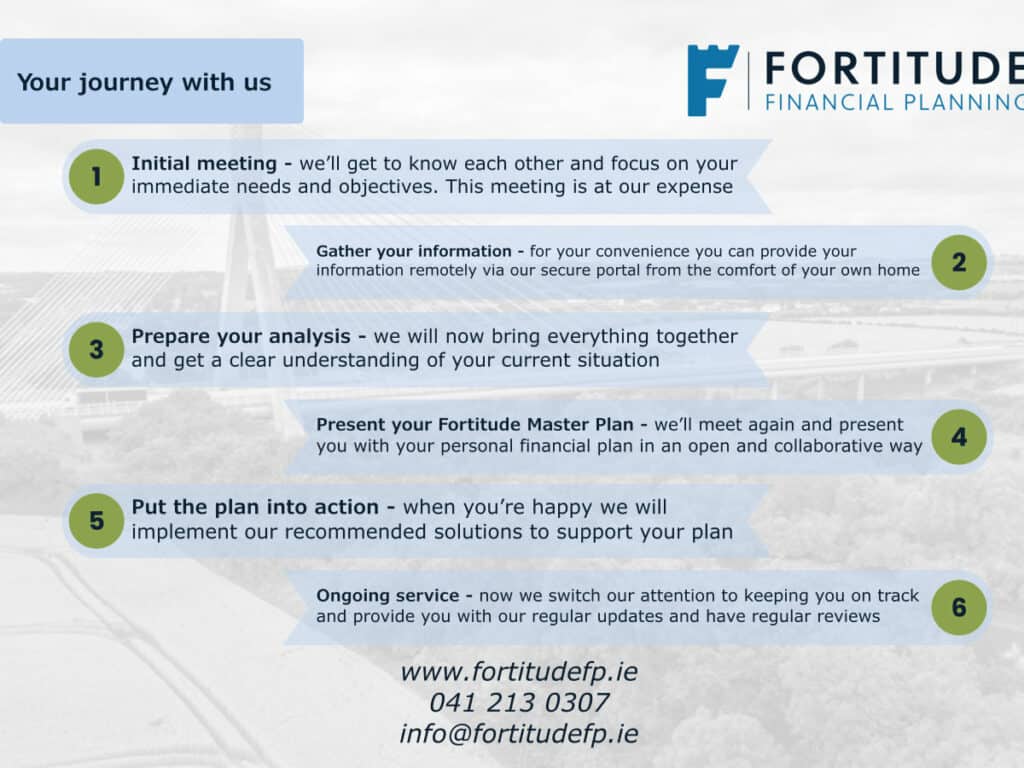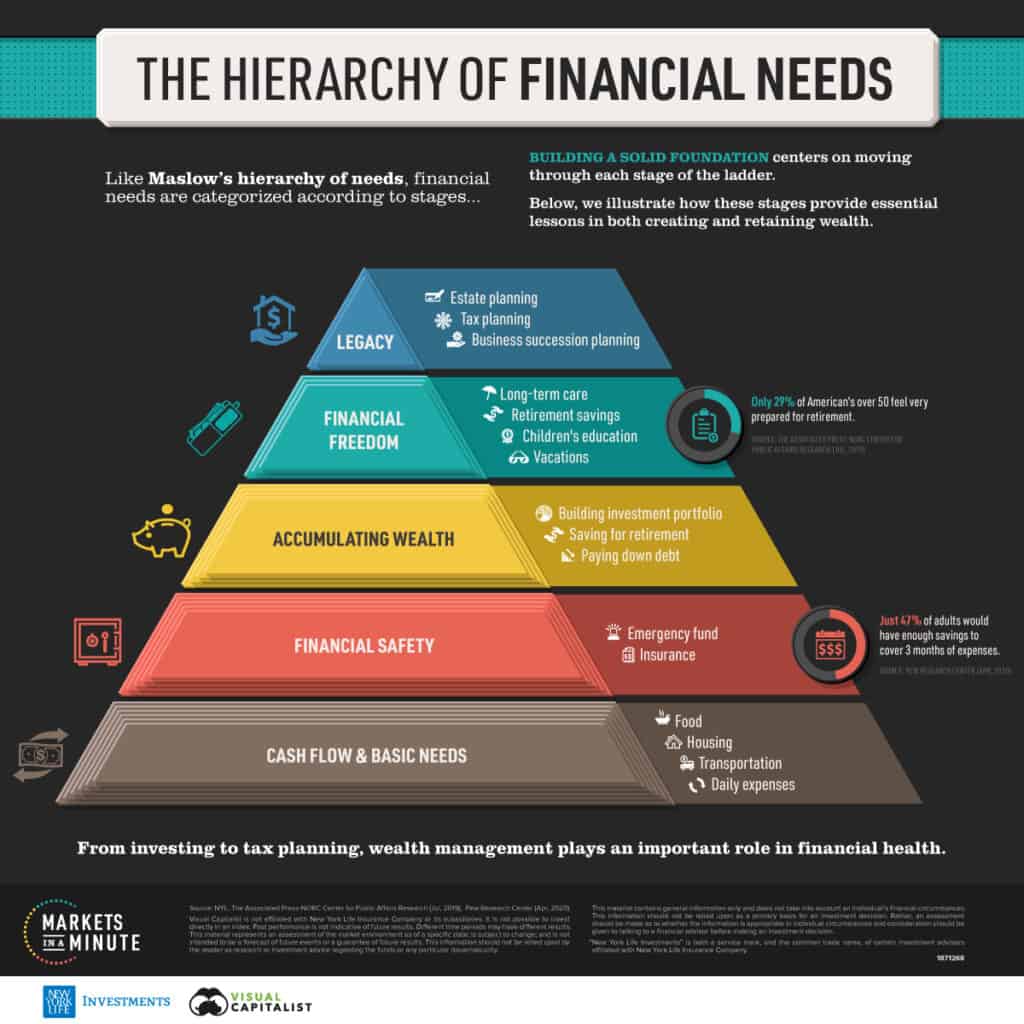Recently I penned an article on the advantages of financial planning – you can read it here.
As I highlighted in the article, unless you have a financial plan, it can potentially be difficult to realise the benefit of it.
What better way to outline the benefits than a real case study.
In the past 4-6 weeks two new clients, a husband and a wife, contacted me.
The Situation
The couple had recently had their third child and all three children were under age 8.
Age-wise the husband is 36 and his wife is 34.
The husband is a partner/director of his company and his wife is a PAYE worker in employment.
We scheduled an introductory call and the couple initially had queries as follows:
- They wanted to set up a pension for the husband as he didn’t have anything in place (his wife is a member of her employer’s company scheme)
- Down the years they had collected a mishmash of life insurance policies sold to them from a combination of banks and salesmen
- They were saving the children’s allowance in the credit union but realised it was generating no return
These were their main issues and they never gave consideration to anything else.

The Journey
Gathering the information
They kindly completed a financial planning questionnaire.
This was done online through our secure portal for their convenience.
Historically, a financial planning questionnaire could be a frustrating 20 plus page paper document.
At Fortitude Financial Planning we’ve tried to move as much away from that as possible to make it convenient for clients and clients can provide us with all of their information online.
The benefits of this approach for clients include the convenience of completing it in their own time.
An authority was signed for us to get access to their existing life cover policies.
The wife provided all relevant details for her pension scheme.
We wrote to the providers of the life policies and obtained all details.
Preparing the Analysis
Now that we had all the information, we could analyse it.
We reviewed their financial planning questionnaire along with all other details we gathered on their existing arrangements.
The key issues we identified for discussion were as follows:
- Husband is the main earner in the household
- Existing life cover for the husband is being paid out of after-tax income
- Whilst the wife was provided with income protection via her employer, the husband had no plans in place to protect his salary against illness or injury
- They would expect their children to attend college but had no set plans on funding this – other than saving the children’s allowance in the credit union
- As identified by the clients zero growth available on the children’s allowance savings in the credit union
- The husband has no business succession plan with his business partner
- And also identified by the clients there was no retirement pension provision in place for the husband via his company
Discussing the findings
Upon completion of the analysis, we met again.
Collaboratively we reviewed the findings.
I highlighted to them the issues they had identified were 100% issues but in terms of priority, there were other issues to be considered.
The husband had no income protection and is the main earner in the household.
Being a self-employed business owner, if he was to go out of work sick for a period of time he wouldn’t be entitled to any state benefit.
This means he would have to draw down on the cash reserves of the company to keep paying his salary.
At a time when income into the company could be reduced he would be faced with reducing the value of his share of the business.
They were paying for life cover for the husband out of after-tax income.
I explained there is a way to provide life cover from before-tax income.
The poor returns on offer from the bank and credit union for savings, we discussed an investment plan to generate growth
Finally a pension solution for the husband via his company.
An important point to note. In this specific case, the pension objective comes last.
This is because the clients are young, they have young children. They have other objectives to allocate resources to before locking money into a pension for 30 plus years.
Only when the more important shorter-term objectives are dealt with, we look at the longer-term retirement objectives.

Implementing the strategies
Following agreement on the issues, we implemented the following solutions:
- Protected the husband’s income against illness or injury – this is tax-deductible for his company
- Effected life cover for the husband – again provided via his company – and again tax-deductible for the company
- Created a specific funding plan and contribution level for third level education for the kids
- Furthermore directed this specific funding to an investment strategy to generate a real return over and above inflation
- Put in place a retirement plan for the husband – the company can fund this, again, tax-deductible
- The wife made an Additional Voluntary Contribution (AVC) to her employer’s pension and backdated the tax relief to 2020
- The husband and his business partner now have scheduled discussions to discuss business succession planning and what would happen if either of them became sick or passed away
The benefits to the clients
Following the review and set-up of the strategies, the clients now have considerable peace of mind.
Because both salaries are now protected against illness or injury.
Should either of the clients be unable to work due to illness or injury, they know 75% of their salaries will continue to be paid.
Funded by the husband’s company, there is no additional outlay to the clients.
By providing the husband with life cover from the company, this reduced their personal costs.
The sound basis of any financial plan is to protect what you have, we have now achieved this objective.
Savings growth – previously, €420 per month children’s allowance was going into the Credit Union.
Not adjusting for inflation, with this strategy approximately €50,000 would have been accumulated in 10 years (when the oldest child turns 18).
By redirecting this to a strategy that targets 6% before fees, allowing for fees, we estimate this growing to in the region of €65,000 if we achieve the target return.
The husband now has a pension in place via his company.
This reduces his tax bill and over the course of the next 30 years will remove his reliance on the company for his retirement.
Two articles I did on this very subject can be accessed here and here.
The husband as the business owner now has active discussions with his business partner to consider the succession planning of the business.
The majority of business owners don’t consider this enough.
Unfortunately, we as business owners can get sick. We can pass away. What happens to their share of the business?
Both financially and practically from an operational point?
This is so important and as such I will cover this in-depth in future articles.

Key takeaways
As young parents, the recent birth of their third child triggered a need to review the finances.
The clients came to me with some specific queries.
Following the full review, they were highlighted as genuine queries but other issues were highlighted.
It was then about prioritising the issues and allocating resources accordingly.
The clients had a lot of good going on in their current financial situation and some that required tweaking.
Truth be told most clients that I meet have a lot of good going on, financial planning is more about tweaking things to make the clients cohesive plan more effective.
There are significant misconceptions and myths about financial planning, financial planners and financial advisors.
One such myth is that we tell clients they’re spending too much, it’s all about saving. Save, save, save for the future or sell, sell, sell to them.
Nothing can be further from the truth.
Take the above clients.
They now have their financial future built in as part of their current lifestyle spending.
If they want to go and buy the latest Apple gadget they can.
If they want to splurge at Christmas, they can.
They are actively living for today and planning for tomorrow at the same time.
They are also in the knowledge they are well equipped to deal with any issues that may arise such as loss of income.
Whilst I have yet to check back in on them, I would bet money they will agree they have seen no change to their current lifestyle.
Because they sought a bit of guidance, their finances are much more cohesive.
They’ve simply gone from the picture on the left to the picture on the right.

They can now focus on what’s most important. The kids, themselves, return on life.

Contact
Sound simple? Look good?
We are always looking to work with clients who want to take charge of their finances.
Don’t let your finances dictate how you live.
Live your life today and give yourself the power to live your financial life in future on your terms.
Request a callback or access the diary and schedule a call with us at your convenience.
Alternatively, call me on 086 0080 756.
Because we don’t charge for an initial meeting, you can contact us with a query as simple as an existing pension or existing life cover and we will be happy to guide you and let you know if we can assist you.


Francis McTaggart CFP® SIA RPA QFA
These blog posts are intended for information purposes only and should not be interpreted as financial advice.
You should always engage the services of a fully qualified financial planner before entering any financial contract.
To discuss engaging the services of Fortitude Financial Planning please email us at info@fortitudefp.ie.
Fortitude Financial Planning Ltd will not be held responsible for any actions taken as a result of reading these blog posts.


 Production
Production